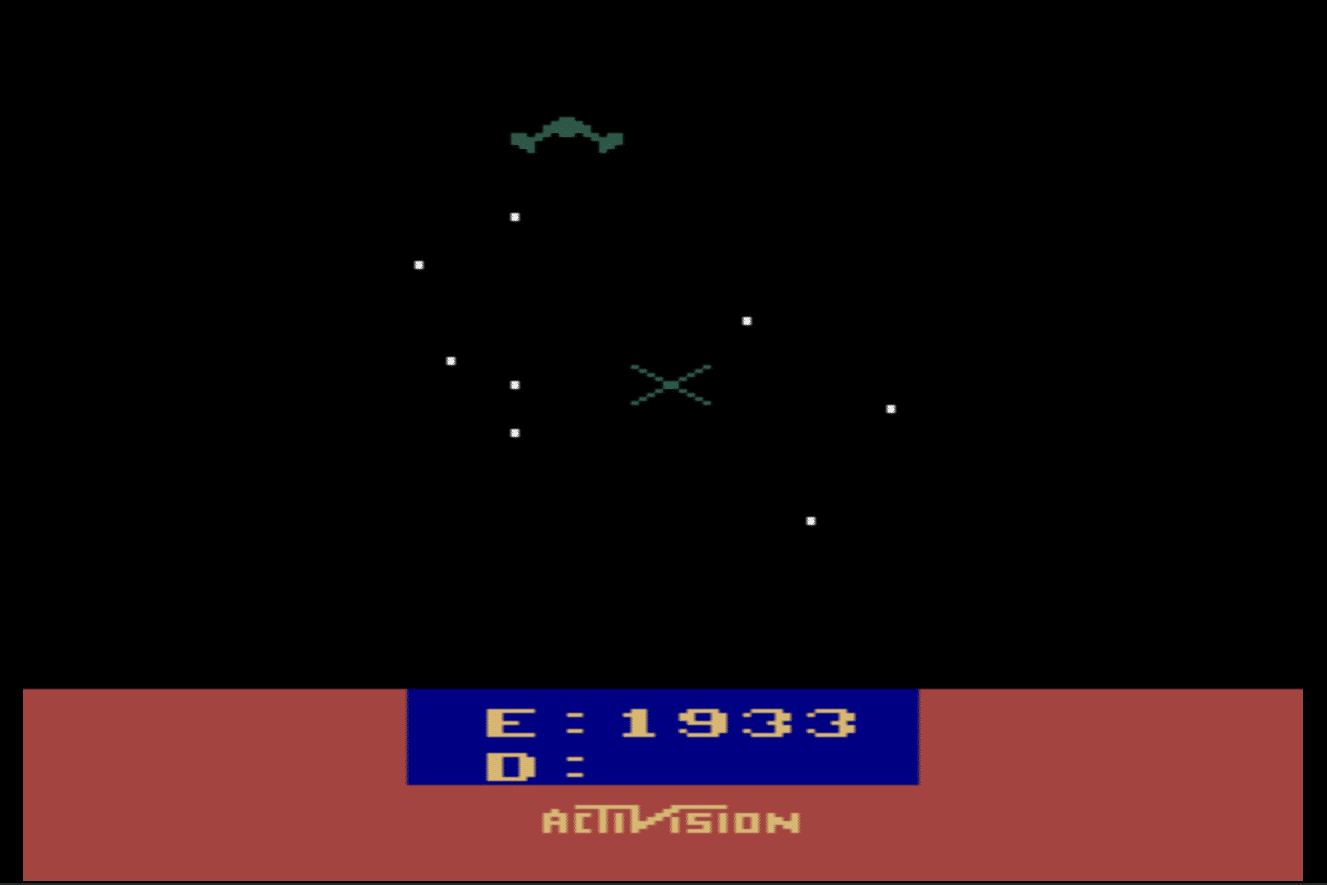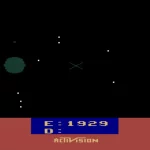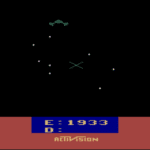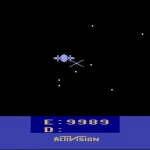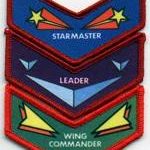Starmaster is Activision’s take on the emerging first-person, star-fighter genre. Released in 1982 and written by Alan Miller, it features gameplay similar to Atari’s Star Raiders (without the complexity of the “Video Touch Pad Controller” add-on hardware).
It plays a minor role in Ready Player One, appearing in a single line.
Quote
Beside the Atari was a shoebox containing nine game cartridges: Combat, Space Invaders, Pitfall, Kaboom!, Star Raiders, The Empire Strikes Back, Starmaster, Yars’ Revenge, and E.T. — Ready Player One p. 102
Game Play
Starmaster is a first-person, starfighter game. Your ship starts with 9,999 units of energy, which you consume warping to different sectors of the galaxy, firing at enemies, and resisting attacks with your shields. The ship consists of warp engines, weapons, shields, and radar, each of which can be damaged/disabled as you take damage.
The game starts off in the first-person perspective, with the 8-bit star field flying past your cockpit window. To locate enemy starfighters, you need to switch to the galactic map (by pressing the “black/white – color” toggle switch). Once there, you can see your friendly starbases, as well as clusters of one, two, or three enemy starfighters.
The goal is to defeat the starfighters before they destroy your starbases, and without running out of energy. You can refuel and repair your ship and the various friendly starbases, but reaching them can be a challenge if you’re running low on energy.
There are four game levels – Ensign, Leader, Wing Commander, and Starmaster. Each has a base score associated with them (e.g. 3,100 points for Ensign). Your final score – after you defeat all of the enemy starfighters on the map – is based on your base score, plus points for enemies destroyed. Subtracted from that score are points for the time taken to complete the mission, docking with starbases, and the loss of star bases. Getting the best score requires efficient resource management as well as skill (efficiency in killing enemy starfighters, ability to evade enemy attacks, etc.)
Impressions
Similar to Star Raiders – Starmaster shares the same first-person starfighter perspective – but doesn’t have the touchpad gimmick/dependency of Atari’s game. That makes it easier to play in emulators, and I imagine it would have made it easier to play on the old 2600 as well.
Starmaster‘s combination of dogfighting and resource management makes it a fun but challenging game – you can’t just fly around the galaxy blasting everything in sight; you need to think about how to do it efficiently.
As a starfighter simulator, Star Raiders is the better game – it includes an inset heads-up radar display that shows where enemies are in a given sector. That makes dog fighting easier than in Starmaster, where you’re often waiting for them to come to you. That said, Starmaster‘s use of color indicators to convey additional information about a sector (green if you’ve killed all the enemies, red if there are threats about) as well as the types of damage you take, is helpful.
Another plus for Starmaster is Activision’s proto-achievement scheme. As with Pitfall, if you achieved a certain score, you could take a picture of that score and send it to Activision in return for a patch. The Starmaster version of these patches included additional chevrons for higher scores (Starmaster, Leader, Wing Commander). While that program is long over, it’s cool to think it was once an option.
The Ready Player One Replay is an ongoing exploration of the games that inspired the novel Ready Player One by Ernest Cline. Love it or hate it, there’s value in revisiting our geeky roots.
High Scores
- My High Score: 3,279 (beat Ensign Level)

